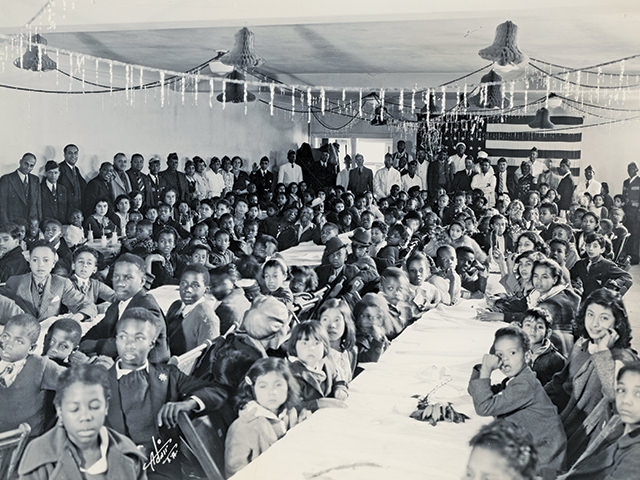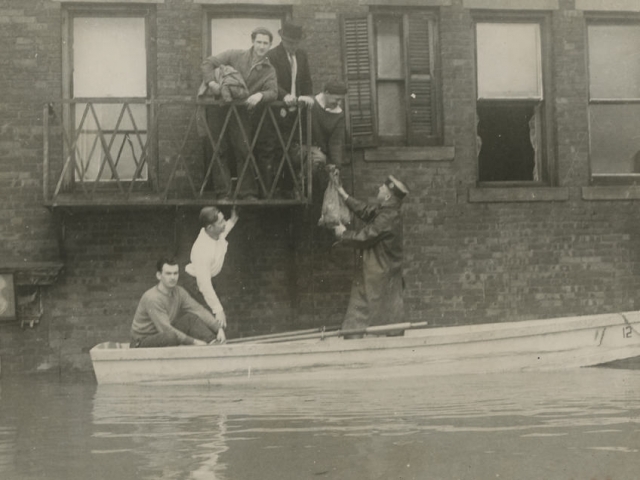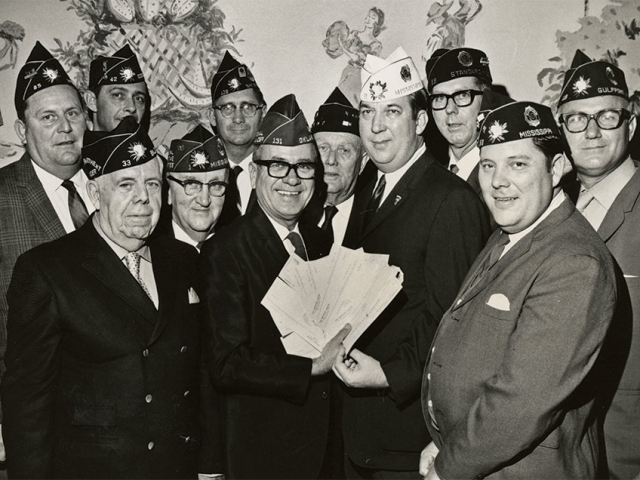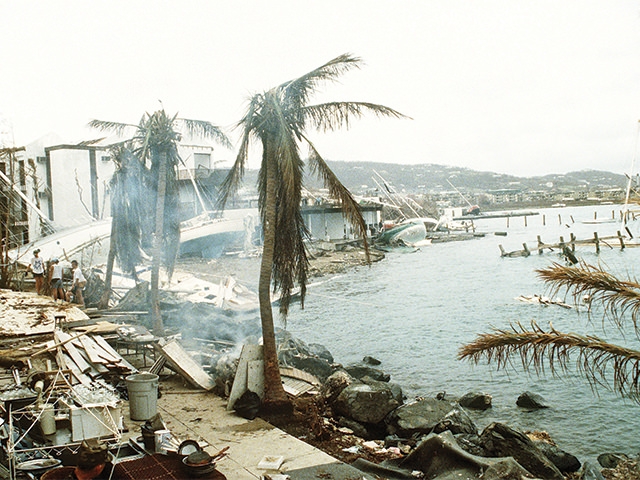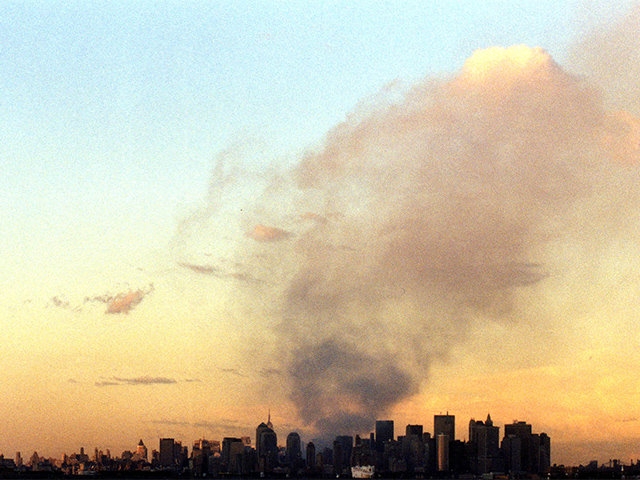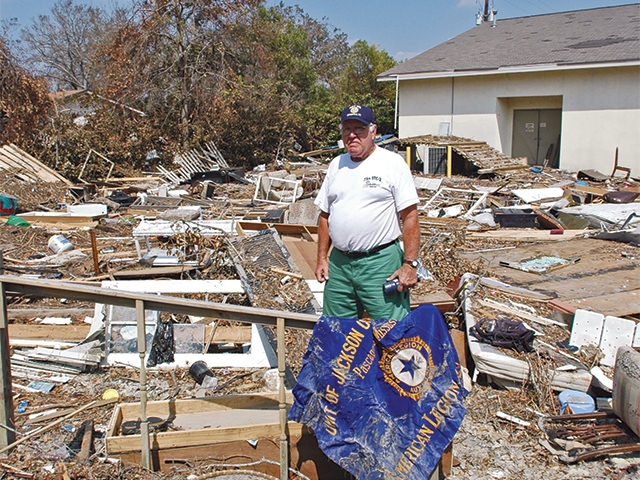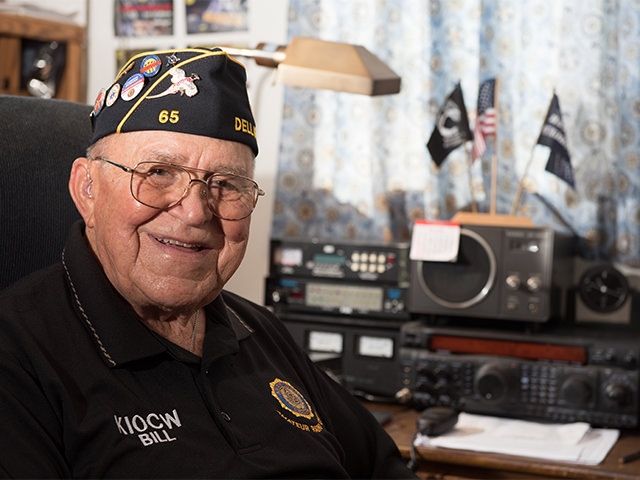Disaster Relief
Disaster Relief
A Century of Effective Emergency Response
The Early Years
In the first five years of the organization’s existence, American Legion posts and Auxiliary units respond to hundreds of disasters, including deadly mining accidents, hurricanes, fires and earthquakes. The organization formally develops an alliance with the Red Cross in 1925 to strengthen disaster preparedness at the local, state and national levels. Posts serve as emergency equipment supply centers, staging facilities and, in the worst cases, field mortuaries. Communication equipment, food and clothing are kept in constant supply, and posts are used for civil defense planning and training.
The Great Flood of ’27
The most disastrous flood to date in U.S. history occurs along the swollen Mississippi River after levees break in April of 1927. Flooding continues for most of two months from Illinois to the Gulf of Mexico, leaving more than 400,000 homeless. American Legion posts assist the National Guard in rescue efforts. Posts provide meals and shelter for refugees, many of whom are African-American farm families who lose everything they own. Following the disaster, the American Legion Central Flood Relief Committee is formed in collaboration with the Red Cross to help families suddenly left homeless. Future American Legion National Commander Roane Waring of Memphis, Tenn., is named chairman of the committee.
The Depression
American Legion posts in communities nationwide serve as soup kitchens and clothing-distribution centers for destitute families in the Great Depression. Post 81 in New Jersey, for instance, serves no fewer than 14,000 meals in less than 15 months. Posts in Memphis provide food, fuel and clothing for more than 12,000 needy residents. An American Legion Auxiliary unit in Gary, Ind., serves meals to more than 34,000 malnourished children in 1934 alone. In actions large and small, Legionnaires give hope and comfort to others facing hunger and economic turmoil.
The Second Great Flood
Between Jan. 19 and March 11, 1937, The American Legion raises over $250,000 and delivers it to the Red Cross to help victims of floods on the Ohio and Mississippi Rivers. As with the 1927 flood, American Legion posts and volunteers transform into relief centers and emergency workers in the devastated areas, distributing some 5,000 tons of food and 3,000 tons of clothing. Hundreds of Legionnaire-owned boats are deployed to search for victims, and a mobile radio unit from a Jamestown, NY, American Legion post is called into service when other communications are knocked out in the flooded areas. More than 1 million lose their homes in the floods, which take the lives of approximately 350 people. Such responses continue as the decades unfold.
Hurricane Camille
On Aug. 17, 1969, Hurricane Camille devastates the Gulf Coast, killing 259, destroying communities and causing nearly $1.5 billion in damages. Many American Legion posts are obliterated and veterans are left homeless after a 24-foot storm surge unleashes floods that extend as far north as Virginia. Restoration is expected to take several months, if not years. The disaster leads The American Legion to establish a reserve fund for relief, offering up to $1,500 for displaced veterans and up to $5,000 for posts that are damaged or destroyed. The reserve account is the genesis of what will become the National Emergency Fund, which is formally established 20 years later. Camille’s destructive force is illustrated by the fact that the flagstaff from Joe Graham American Legion Post 119 in Gulfport, Miss., is later found about 80 miles away, buried in mud near Hammond, La. American Legion Posts 5 and 111 in Tampa, Fla., which narrowly missed the hurricane’s path, fly more than 4,000 pounds of emergency supplies to Keesler Air Force Base in Biloxi, Miss., for the recovery effort. Legionnaires, gathered for the national convention in Atlanta, raise $61,000 on the spot for the relief fund.
Hurricane Hugo and the Birth of the NEF
Devastation from Hurricane Hugo of late September 1989 and the northern California earthquake five weeks later leads The American Legion National Executive Committee to officially re-establish its Disaster Relief Fund in October that year. “I can think of no better way for our members to say, ‘Yes! We care about our fellow veterans,’” National Commander Miles Epling writes in a letter published in the December American Legion Magazine. The NEC authorization paves the way for the National Emergency Fund and makes it an ongoing campaign, with an initial seeding of $50,000 and a $1 million goal for the permanent endowment. Cash grants would be dispersed through departments of The American Legion, including more than $1 million for victims of the devastating 1997 flood season in Ohio, Kentucky, Indiana, Minnesota and North Dakota.
9/11
“I walked out in front of our fire truck and saw what looked like a hardback book on the ground. I picked it up, and it was a Bible. It was just a little tattered, but it was OK. I had such mixed emotions, that a Bible would be the only thing to survive something this awful. It served as a sign to me that these victims were now with God. I took the Bible and put it on the front of the bumper of our first engine to arrive. Eventually, an investigator asked me where I found it and collected it as evidence. Since then, I've spoken with many victims' family members, and it's very meaningful to them that the Bible was found. They consider it a miracle of sorts.”
– American Legion Post 257 member Dick Pristas, a first responder at the Flight 93 crash near Shanksville, Pa., on Sept. 11, 2001
The terrorist attacks of Sept. 11, 2001, destroy the Downtown Athletic Club American Legion post in lower Manhattan, and the Kim Lau American Legion post in Chinatown serves as a relief station for first responders. When a Canadian radio station airs the request from a young girl to send stuffed animals and toys to New York to comfort the children there, an 18-wheeler arrives in Chinatown, and the stuffed animals are housed in the basement of the Chinatown post before distribution to kids. In Washington, D.C., National Commander Richard Santos is 23 minutes away from delivering testimony before a joint session of Congress when the Pentagon is attacked, and everyone is ordered to evacuate. The commander’s son, Steffen, is among the fire fighters who respond to the attack at the Department of Defense headquarters. Near Shanksville, Pa., where Flight 93 was flown into the ground after passengers seized control from hijackers. American Legion Post 257 Commander Dick Pristas is among the first responders at the crash site.
Katrina, Wilma and Rita
Hurricane Katrina blasts into the Gulf Coast on Aug. 29, 2005, and the storm surge that follows breaks through levees in New Orleans, ultimately claiming more than 1,800 lives and causing more than $125 billion in damages. Destroyed are all but the top two floors of the New Orleans VA Medical Center, and veteran patients have to be triaged in makeshift clinics around the city and beyond. The American Legion National Emergency Fund distributes more than $2 million in cash grants to assist the displaced, and posts throughout the Southeast transform, including one that becomes a kidney dialysis clinic. Following Katrina, Hurricanes Wilma and Rita cause further devastation, making the storm and its aftermath the most destructive weather event in a century in the United States. The destruction of the VA medical center in New Orleans begins a 12-year effort to build a new one in the Crescent City.
American Legion Amateur Radio Club
On May 4, 2011, The American Legion National Executive Committee passes a resolution to establish The American Legion Amateur Radio Club in support of the organization’s disaster-preparedness program, in association with the Department of Homeland Security. The ham radio club is authorized a budget of $1,000 to get started. By 2017, The American Legion’s seven-year-old national amateur radio club exceeds more than 3,200 members operating at more than 30 local posts, making it one of the largest networks in the nation.
American Legion Disaster Relief Today
The American Legion’s disaster-relief role has included cleanup and repair after Superstorm Sandy, NEF grants and emergency supplies after flooding in Colorado, food and clothing after wildfires in central Washington, truckloads of water and supplies following Hurricanes Harvey and Irma and multiple efforts to help Puerto Rico recover after the devastating storm of 2017. The NEF remains a vital source of funding for veterans and American Legion posts during crises, and when disaster strikes locally, Legionnaires work with groups like the Red Cross and Team Rubicon to assist those in need.


